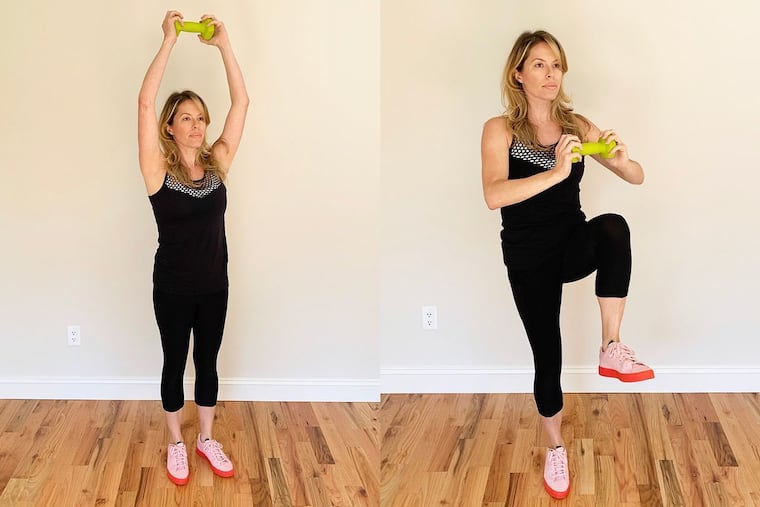5 exercises for improving your lung health
Ramp up your lung health with the following endurance-enhancing routine.

Take a deep breath. As you inhale, oxygen enters your nostrils and travels through your throat, and the muscles between your ribs expand, allowing your lungs to swell with air. Oxygen then penetrates the blood and bathes the body with life-sustaining nutrients.
From the surface, respiration is such a seemingly simple function. Yet, it has the power to soothe stress, decrease a high heart rate, and push us to new athletic levels. Without a healthy set of lungs, and strong supporting intercostal and diaphragm muscles, we could not survive.
A lot of work goes into each breath we take. And as the body matures, breathing can become more strenuous as bone mass and lung tissue elasticity begin to decline. When the lungs can’t expand fully, shallow breathing and a decrease in lung capacity can result. That’s why it’s so important to implement exercises to boost bone and tissue mass surrounding the rib cage and diaphragm.
Ramp up your lung health with the following endurance-enhancing routine:
Belly breather. The diaphragm is the main muscle responsible for respiration. Similar to any other muscle in the body, it grows stronger when exercised. Many of us tend to be shallow chest breathers, rather than belly breathers. This is especially notable during stressful events, which can trigger shallow breathing. Insufficient levels of oxygen can then cause uncomfortable sensations such as hyperventilation, dizziness, and anxiety.
Practicing belly or abdominal breathing is one of the best methods for strengthening this muscle and training your brain to breathe from your diaphragm, not your chest. Here’s how:
Step 1. With your body relaxed, place one hand on your chest and one hand on your stomach. Slowly inhale through your nostrils. The hand resting on your stomach should rise.
Step 2. Now evenly exhale. Notice your stomach slowly deflate as you release the air from your body. Continue to breathe in for three counts and out for three counts until you feel relaxed.
Interval training circuit. Activities such as running or cycling require strong lungs to power through from start to finish. Build up your endurance by starting with a manageable duration, such as 10 minutes of fast walking, followed by five minutes of jogging. The more you practice this cardiovascular exercise, the easier it will become to sustain your breath as you go.
Similarly, interval strength training is a smart, safe way to gradually increase the workload for your lungs. With each passing week, your stamina will improve. Here’s how:
For this circuit, you will perform 30 seconds of exercise followed by 30 seconds of rest. This will allow for an energy jolt to get the cardiovascular system pumping, followed by a brief recovery time to regain your normal breath. Repeat the circuit three times.
Jog in place: Move briskly, swinging your arms and kicking your heels up toward your glutes.
Rest for 30 seconds.
Jumping jacks: Keep your core muscles engaged while jumping your arms and legs out wide.
Rest for 30 seconds.
High knees: Quickly drive your knees up toward your chest. For an added challenge, include a free weight, as shown.
Rest for 30 seconds.
Jump squat: Stand with feet shoulder-width apart. Hinge back at your hips with your body weight resting in your heels. Explode up in the air, landing softly on the way down.
Rest for 30 seconds.
Ashley Blake Greenblatt, ACE-CPT, is a certified personal trainer and wellness coach. To learn more about her virtual training program, visit ashleyblakefitness.com.